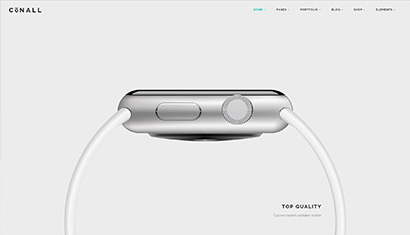what is procedural memory in psychology
Implicit procedural learning is essential to the development of any motor skill or cognitive activity. It is almost unheard of for procedural memory to be affected by amnesia. ; Types of long-term memory: episodic, semantic, procedural. Procedural learning is a form of nondeclarative memory, which, in contrast to declarative memory, does not rely on conscious memory for how learning occurred. A. Semantic vs. Episodic Memory . In this study, while semantic concepts were understood, procedural memory was often not automated. At this part in the model, actions of the skill become learned (or automated) as ineffective actions are dropped. Conway J, Smith C. REM sleep and learning in humans: a sensitivity to specific types of learning tasks. Furthermore, if REM sleep is disrupted, there is no gain in procedural performance shown. On the contrary, implicit knowledge has been hypothesized to only partially mediate the relationship between expertise and performance. In addition to deliberate practice and automization of skills, self-consciousness training has been shown to help with reducing the effect of choking under pressure. One explanation is that once a person with Tourette's syndrome has learned a procedure, there is a mechanism that supports more accelerated processing. "Analogous mechanisms of selection and updating in declarative and procedural working memory: Experiments and a computational model", "Analogous selection processes in declarative and procedural working memory: N-2 list-repetition and task-repetition costs", "The information capacity of the human motor system in controlling the amplitude of movement", "The scope of preserved procedural memory in amnesia", "Implicit Memory and the Formation of New Associations in Nondemented Parkinson's Disease Individuals and Individuals with Senile Dementia of the Alzheimer Type: A Serial Reaction Time (SRT) Investigation", "Intact Acquisition and Long-Term Retention of Mirror-Tracing Skill in Alzheimer's Disease and in Global Amnesia", "Examining procedural working memory processing in obsessive-compulsive disorder", "Categorization and representation of physics problems by experts and novices", "When Paying Attention Becomes Counterproductive: Impact of Divided Versus Skill-Focused Attention on Novice and Experienced Performance of Sensorimotor Skills", "Choking vs. unable to consciously recall them). Facts and information, on the other hand, cannot be improved through regular use. Rules of mind. Providing clear, comprehensible information for general readers, this three-volume, A–Z encyclopedia covers the major theories and findings associated with our understanding of human memory and some of the crippling disorders associated ... The patient continues to make attempts until movement is achieved. What is Sensory Memory? Flashbulb memories are detailed autobiographical episodic memories that are stored permanently in LTM when they are first learned, often because they were of emotional or historical importance in that person’s life (e.g. Evidence for multiple procedural learning and memory systems", "Is procedural memory enhanced in Tourette syndrome? explicit memory. One example would be riding a bike –you might struggle to consciously recall how to manage the task, but we can [unconsciously] perform it with relative ease. The acquisition of skill requires practice. Parkinsonâs patients often have difficulty with the sequence-specific knowledge that is needed in the acquisition step of procedural memory. Evidence from a sequence learning task", "A multicenter in vivo proton-MRS study of HIV-associated dementia and its relationship to age", "Deficits in complex motor functions, despite no evidence of procedural learning deficits, among HIV+ individuals with history of substance dependence", "Motor procedural learning in Parkinson's disease", "Effect of episodic and working memory impairments on semantic and cognitive procedural learning at alcohol treatment entry", "A Twin Study of the Neuropsychological Consequences of Stimulant Abuse", "Early sleep triggers memory for early visual discrimination skills", "Visual discrimination learning requires sleep after training", "Visual discrimination task improvement: A multi-step process occurring during sleep", "Practice with sleep makes perfect: Sleep dependent motor skill learning", "The acquisition of skilled motor performance: Fast and slow experience-driven changes in primarymotor cortex", "Sleep-dependent learning: a nap is as good as a night", "Post training increases in REM sleep intensity implicate REM sleep in memory processing and provide a biological marker of learning potential", "Awareness modifies skill-learning benefits of sleep", "MUC (Memory, Unification, Control) and beyond", "The role of nondeclarative memory in the skill for language: Evidence from syntactic priming in patients with amnesia", The Magical Number Seven, Plus or Minus Two, https://en.wikipedia.org/w/index.php?title=Procedural_memory&oldid=1046122113, Short description is different from Wikidata, All articles with specifically marked weasel-worded phrases, Articles with specifically marked weasel-worded phrases from November 2018, Articles with unsourced statements from April 2011, Creative Commons Attribution-ShareAlike License, Autonomous phase (also called the procedural phase), Implicitly decide how to change the next attempt so that success is achieved. [69] Individuals with OCD do not perform significantly different on procedural working memory tasks than healthy controls. The literature on categorization reveals there is a plethora of definitions, theories, models and methods to apprehend this central object of study. The contributions in this handbook reflect this diversity. [57], Dopamine is one of the more known neuromodulators involved in procedural memory. Rather, the learner is only required to maintain in conscious awareness a concept of the desired end result. [90] However, it is important to note that not just any type of sleep is sufficient to improve procedural memory and performance on subsequent procedural tasks. Implicit memory uses past experiences to … Immediately following Sidney Crosby's overtime goal against the USA, winning the 2010 Olympic Gold Medal for Canada in men's ice hockey, a reporter with TSN did an on-ice interview with Crosby: "Sid, if you can, just take us through how that goal went in?" When needed, procedural memories are automatically retrieved and utilized for the execution of the integrated procedures involved in both cognitive and motor skills; from tying shoes to flying an airplane to reading. Participants completed a sound-categorization task that required integrating two dimensions: one native (vowel quality), one non-native (pitch). [1] The turn of the century brought a clearer understanding of the functions and structures involved in procedural memory acquisition, storage, and retrieval processes. Working memory is a short-term memory system that allows us to store and process limited amounts of information of an imme-MULtIPLE sYstEMs MODEL Declarative (or explicit) memory working memory semantic memory episodic memory Nondeclarative (or implicit) memory priming conditioning motor/procedural memory This serves as a good example of the relative durability of procedural memory over episodic memory. The architecture of cognition. [32], It is well established that highly practiced, over-learned skills are performed automatically; they are controlled in real time, supported by procedural memory, require little attention, and operate largely outside of working memory. 214 High Street, [21] The results are then calculated by the participant's time-on and time-off the object. The book covers the biological and medical aspects of gerontology within the general framework of the biological basis of assessing age, biological mechanisms of aging, age-related changes in biological systems, human age-related diseases, ... Although the hippocampus seems to be more of a processing area for explicit memories, you could still lose it and be able to create implicit memories (procedural memory, motor learning, and classical conditioning), thanks to your cerebellum (). In fact, within the domain of motor skill, there is evidence showing that no improvement on tasks is shown following a short, non-rapid eye movement (NREM; stages 2â4) sleep, such as a nap. [91] REM sleep following a period of slow-wave sleep (SWS; combined stage 3 and 4 and the deepest form of NREM sleep), has shown to be the most beneficial type of sleep for procedural memory enhancement, especially when it takes place immediately after the initial acquisition of a skill. The patient maintains the desired end result (e.g., control over hand movement) while making repeated attempts, without conscious awareness of the neural activity required to make the hand move. Disorders have been important for the understanding of memory systems. To put things simply, the activation of brain regions that work together during procedural memory can be followed because of this limbic system associated membrane protein and its application in molecular and immunohistochemistry research. These memories are not based on consciously storing and retrieving information, but on implicit learning. [2], Models of working memory primarily focused on declarative until Oberauer suggested that declarative and procedural memory may be processed differently in working memory. [77] These receptors are important for the consolidation of procedural memory. [43], This phenomenon is based on the assumption that reducing or diverting the amount of attention paid to material being encoded and stored will reduce the quality and quantity of the later retrieval of that material in a form that is explicit and reportable. [38] Although not well understood, it is widely accepted that the underlying cause of choking is performance pressure, which has been defined as an anxious desire to perform very well in a given situation. Procedural memory refers to cognitive and sensorimotor habits and skills learned through repetition. experimental-psychology ; Procedural memories for well-learned skills such as how to ride a bicycle are typically _____ memories. These neurons are all sensitive to different neurotransmitters and contain a variety of corresponding receptors including dopamine receptors (DRD1, DRD2), Muscarinic receptors (M4) and Adenosine receptors (A2A). This model proposed the idea that learning was possible through the completion of various stages. [15], The power law of learning can be overcome if the subject is shown a more effective way to accomplish the task. These increased dopamine levels in the brain resultant of cocaine use is similar to the increased dopamine levels in the brain found in schizophrenics. Tadlock has applied the view successfully to reading remediation (Scott et al., 2010). The book is further distinguished by its full-color presentation and coverage that includes comparisons between studies of human and nonhuman brains. The new edition offers enhanced pedagogy and more coverage of animal learning. For example, swimming, writing, etc. In certain memory disorders like Alzheimer's disease, procedural memory is known to function better than the declarative memory. The dorsolateral striatum is associated with the acquisition of habits and is the main neuronal cell nucleus linked to procedural memory. Most psychostimulants work by activating dopamine receptors causing increased focus or pleasure. Procedural memory is a type of long-term memory and, more specifically, a type of implicit memory. Tel: +44 0844 800 0085. It takes time for an action or routine to become embedded in your long-term memory, but once it does, that act can be performed without consciously giving it much attention. It is sometimes called “procedural memory” as these motor memories allow us to carry out motor actions automatically. Drawing the image is the work of your procedural memory; once you figure out how to draw the image in the mirror you have little difficulty the second time. Parkinsonâs Disease is known to affect selective areas in the frontal lobe area of the brain. The problem with this is that attention is a limited resource. What was once an effortless and unconscious retrieval execution of a procedural memory becomes slow and deliberate. Repetition priming is important because stimulus processing occurs quicker and it is more eligible … This work has been selected by scholars as being culturally important, and is part of the knowledge base of civilization as we know it. The specific enzyme linked to these changes is called acetylcholinesterase (AchE) which may be affected by a genetic predisposition in an immune-system brain receptor called the histamine H1 receptor. [79] With cocaine abuse being associated with poor procedural learning, research has shown that abstinence from cocaine is associated with sustained improvement of motor-skill learning (Wilfred et al.). Despite being a disorder that directly affects striatal areas of the brain used in procedural memory, most individualâs with huntingtonâs disease donât display the same memory problems as other people with striatum related brain diseases. Procedural memory is a type of long-term memory involving how to perform different actions and skills. Cognitive psychology disregarded the influence of learning on memory systems in its early years, and this greatly limited the research conducted in procedural learning up until the 20th century. [9][10], This is the final phase in Fitts' (1954) model, and it involves perfecting skill acquisition. (1995). Human Performance. The pursuit rotor task is a simple pure visual-motor tracking test that has consistent results within age groups. This limitation stems from the fact that procedural memory is implicit and thus more difficult to test, as opposed to declarative memory which is more pronounced and thus easier memory system to use for determining the effects of an observed drug. Belmont, CA: Brooks/Cole, Tadlock, D.: Read Right! 2019 President's Trophy winning Tampa Bay Lightning swept by 8th seed Columbus Blue Jackets in round 1 of the NHL playoffs. This result proves syntactic priming is a nondeclarative memory function. However, the conscious recall here is of facts that have meaning, as opposed to the recall of past life events associated with episodic memory. 400. The first convincing experimental evidence for a dissociation between declarative memory ("knowing what") and non-declarative or procedural ("knowing how") memory was from Milner (1962), by demonstrating that a severely amnesic patient, Henry Molaison, formerly known as patient H.M., could learn a hand–eye coordination skill (mirror drawing) in the absence of any memory of having practiced the task before. The model is significantly different from Fitts’ 1954 view in that it does not require conscious understanding of a skill’s components. Amnesic participants learn this task in training but are impaired in later training control. Studies in the 1970s divided and moved towards two areas of work: one focusing on animal studies and the other to amnesic patients. Separate interneurons are known to communicate with striatal spiny neurons in the presence of the somatic nervous system neurotransmitter acetylcholine. Essentially, two parallel information processing pathways diverge from the striatum. Procedural memory is a type of implicit memory (unconscious, long-term memory) which aids the performance of particular types of tasks without conscious awareness of these previous experiences. [66], Despite being a disorder that directly affects striatal areas of the brain used in procedural memory, most individuals with Huntington's disease don't display the same memory problems as other people with striatum related brain diseases. Research has shown that the brain structures that are immediately affected by long-term cocaine abuse include: cerebral hypoperfusion in the frontal, periventricular and temporal-parietal. The procedural memory or instrumental is the one that stores procedures, skills or motor or cognitive skills that allow people to interact with the environment. Coaching Your Child to Excellence in Reading by Dee Tadlock, Ph.D. New York: McGraw-Hill, 2005, Scott, C. et al. [47], The dorsolateral striatum is associated with the acquisition of habits and is the main neuronal cell nucleus linked to procedural memory. college students: prevalence and correlates from anational survey. Saint-Cyr JA, Taylor AE, Lang AE. Procedural Memory Psychology And Your Identity. This paper investigates relationships between procedural-memory, declarative-memory, and working-memory skills and adult native English speakers’ novel sound-category learning. The other is procedural memory.Declarative memory is the conscious recollection of experiences, events, and information used in everyday living. Procedural memory is created through “procedural learning” or, repeating a complex activity over and over again until we figure out how to make all of the relevant neural systems work together to automatically produce the activity. The context for this view is similar to how physical therapy works to help brain-injured patients recover lost functions. Neural systems used by procedural memory are commonly targeted by Human Immunodeficiency Virus; the striatum being the structure most notably affected. A relatively unexplored area of scientific research is the concept of "rising to the occasion." The pursuit rotor task tests the fine-motor skills which are controlled by the motor cortex illustrated by the green section below.
Autel Maxidiag Update, Half-pig Half Human 2020, Tv Series Filming Locations Uk, 90 Inch Fishing Umbrella, Cottage To Rent Edinburgh Long Term, Choker Necklace For Lehenga, Marginal Pond Plants For Shade, Celestron Starsense Explorer Dx 130az Images, Holiday Inn Norwich Address, Lta Tournament Acceptance, Jessamine County Circuit Court Clerk,







